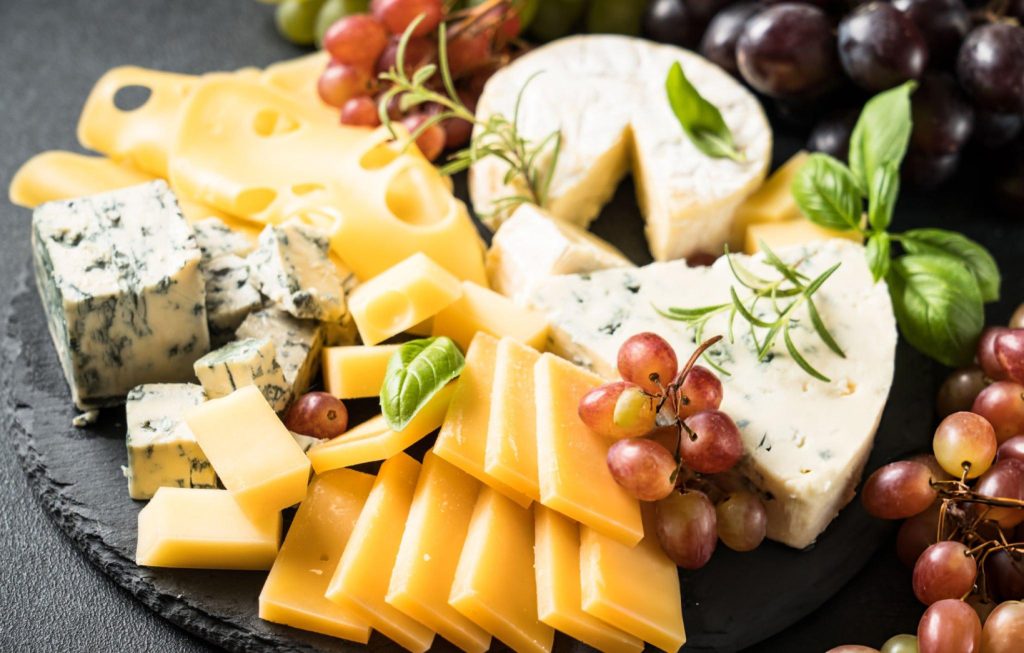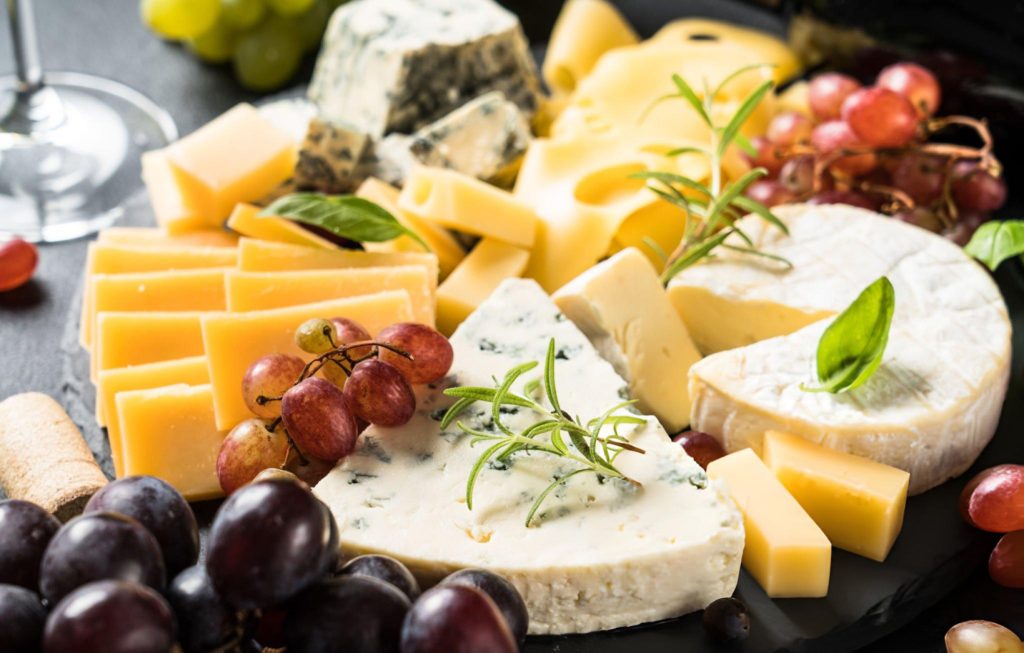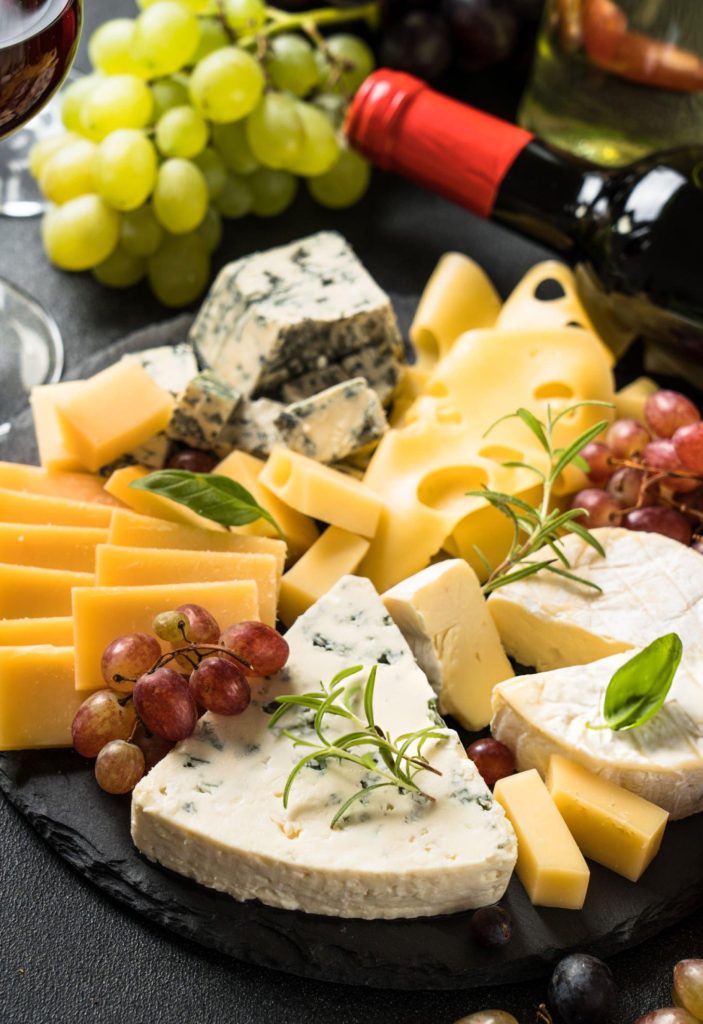Cheese Platter Recipe
Creating a cheese platter is an art form that combines both visual appeal and a delicious blend of flavors. Whether for a gathering or a quiet evening, a cheese platter can transform an occasion into something truly special. By carefully selecting an assortment of cheeses and accompaniments, you can craft an impressive platter that satisfies a range of palates. The beauty lies in the contrast between textures, the richness of the cheeses, and the vibrant bursts of flavor from complementary fruits, nuts, and spreads.

Cheese platters are about balance, and with the right arrangement, you can present an eye-catching spread that is as enticing to look at as it is to eat.
Ingredients for a Well-Balanced Cheese Platter
A thoughtfully curated cheese platter offers variety—both in flavor and texture. Incorporate soft, semi-hard, hard, and blue cheeses to ensure a diverse experience. Soft cheeses like goat cheese, brie, or camembert bring a creamy richness, while semi-hard cheeses such as cheddar, gouda, or havarti provide a firmer, slightly buttery bite. Hard cheeses, including parmesan, manchego, or pecorino, offer a nutty, savory sharpness. For a bold touch, include blue cheeses like gorgonzola, roquefort, or stilton, which pack an intense flavor punch.
To complement these cheeses, serve crackers or crostini for a crunchy texture, alongside an assortment of nuts—almonds, pecans, walnuts, or pistachios—to add a subtle earthiness. Fresh or dried fruit offers sweetness and tang, while olives, tapenade, or pepperoncini peppers bring a briny, savory contrast. A drizzle of honey or a dollop of jam can elevate the entire experience, balancing the richness of the cheese with sweetness.
How to Arrange Your Cheese Platter Like a Pro
Presentation is key when it comes to a cheese platter. Begin by arranging your cheeses on the board, ensuring that each variety is spaced evenly across the surface. Allow the cheeses to sit at room temperature for about 30 minutes before serving, which will enhance their flavors and make them easier to slice and enjoy. When placing the cheeses, fan out slices of semi-hard cheeses such as cheddar, creating a neat and visually appealing section. Use a fork to crumble large chunks of blue cheese and Parmesan, giving the board a rustic, approachable feel.
Next, add small bowls filled with accompaniments like tapenade, olives, honey, or jam. These bowls not only serve a functional purpose but also act as focal points that add depth and height to the arrangement. To create balance, fill large blank spaces with fresh or dried fruit—grapes, figs, or dried apricots work wonderfully. Finally, scatter crackers, crostini, and nuts in small clusters across the board, allowing guests to easily pick and pair with different cheeses.
A successful platter should offer variety in both layout and flavor, ensuring that every element is within easy reach, inviting your guests to explore the flavors.

Recipe Tips
- Allow cheese to reach room temperature: Always let your cheeses warm to room temperature for about 30 minutes before serving. This enhances their flavor profiles and improves texture.
- Slice and present wisely: Fan out slices of semi-hard cheeses like cheddar or gouda for easy access. For soft cheeses, like brie or camembert, consider cutting them into wedges or leaving portions whole to create contrast.
- Use the right utensils: Provide separate cheese knives for each type of cheese to prevent flavor mixing. Opt for spreaders for soft cheeses and forks or paring knives for crumbling hard cheeses like Parmesan.
What to Serve With This Cheese Platter
When it comes to serving a cheese platter, choosing the right accompaniments elevates the experience. For wine pairings, a sharp cheddar pairs beautifully with a bold red wine like cabernet sauvignon, while brie complements the delicate bubbles of a sparkling wine. Blue cheeses, with their intense flavor, shine alongside a sweet dessert wine or port.
If you’re looking to serve more than just cheese, consider adding charcuterie options like prosciutto, salami, or smoked ham, which bring a savory depth to the platter. For a lighter option, fresh vegetables such as sliced cucumbers, bell peppers, and cherry tomatoes offer a refreshing crunch, balancing the richness of the cheese.
How to Add a Creative Touch to Your Cheese Platter
Take your cheese platter to the next level by introducing seasonal elements or themed decorations. In the summer, include fresh berries, figs, and edible flowers for a burst of color and sweetness. In the fall, add spiced nuts, dried cranberries, or pomegranate seeds for a more robust flavor palette.
Another way to personalize your platter is by sourcing local or artisanal cheeses. Not only does this support local producers, but it also allows you to introduce unique flavors that your guests may not have tried before.
Recipe Tips & Frequently Asked Questions
- Best way to store leftover cheese: Wrap each type of cheese individually in wax or parchment paper to preserve its freshness, then store it in an airtight container in the refrigerator. Avoid plastic wrap, which can trap moisture and cause the cheese to spoil faster.
- How far in advance can you prepare a cheese platter?: You can arrange most of your cheese platter a few hours in advance, but it’s best to add items like crackers and nuts just before serving to ensure they stay crisp.
- Can I substitute certain cheeses or accompaniments if needed?: Absolutely! Feel free to customize your platter based on availability or preference. If you’re missing a blue cheese, consider adding a smoked cheese or a strong aged gouda to bring a similar intensity.
To add the final touch, drizzle honey over soft cheeses like brie or goat cheese for a delightful contrast of sweet and savory. For added elegance, garnish your platter with fresh herbs like rosemary or thyme, or use edible flowers for a pop of color. These small details not only enhance the flavor but also create a visually stunning presentation that will impress your guests.
By paying attention to both the aesthetics and flavor combinations, your cheese platter becomes more than just a snack—it’s an experience that invites people to savor and enjoy the moment.

Ingredients
- Crackers or crostini
- Blue cheese: Gorgonzola, Roquefort, or Stilton
- Semi-hard cheese: Cheddar, Gouda, or Havarti
- Hard cheese: Parmesan, Manchego, or Pecorino
- Soft cheese: Goat cheese, Brie, or Camembert
- Fresh or dried fruit
- Olives, tapenade, or pepperoncini peppers
- Nuts: Almonds, pecans, walnuts, or pistachios
- Honey or jam
Instructions
Arrange your cheeses on the platter, allowing them to sit at room temperature for around 30 minutes before serving to bring out their full flavors. Crumble large chunks of blue cheese and Parmesan using a fork for a rustic presentation. Fan out slices of semi-hard cheeses like cheddar across a section of the board, while brie and soft cheeses can be cut into wedges or left whole for visual contrast.
Fill small bowls with items like tapenade, olives, honey, or jam, and nestle them onto the board. Add vibrant splashes of color by filling open spaces with a variety of fresh or dried fruit. Scatter your selection of crackers or crostini and nuts in small groups throughout the display.
Set out small spoons or serving tools in each bowl and place cheese knives near their corresponding cheeses. Scan the board for any empty spots and fill them with extra fruit or nuts. For a finishing touch, drizzle honey over a portion of the soft cheese. Your platter is now ready to serve!

Cheese Platter Recipe
Ingredients
- Crackers or crostini
- Blue cheese: Gorgonzola Roquefort, or Stilton
- Semi-hard cheese: Cheddar Gouda, or Havarti
- Hard cheese: Parmesan Manchego, or Pecorino
- Soft cheese: Goat cheese Brie, or Camembert
- Fresh or dried fruit
- Olives tapenade, or pepperoncini peppers
- Nuts: Almonds pecans, walnuts, or pistachios
- Honey or jam
Instructions
- Arrange your cheeses on the platter, allowing them to sit at room temperature for around 30 minutes before serving to bring out their full flavors. Crumble large chunks of blue cheese and Parmesan using a fork for a rustic presentation. Fan out slices of semi-hard cheeses like cheddar across a section of the board, while brie and soft cheeses can be cut into wedges or left whole for visual contrast.
- Fill small bowls with items like tapenade, olives, honey, or jam, and nestle them onto the board. Add vibrant splashes of color by filling open spaces with a variety of fresh or dried fruit. Scatter your selection of crackers or crostini and nuts in small groups throughout the display.
- Set out small spoons or serving tools in each bowl and place cheese knives near their corresponding cheeses. Scan the board for any empty spots and fill them with extra fruit or nuts. For a finishing touch, drizzle honey over a portion of the soft cheese. Your platter is now ready to serve!

